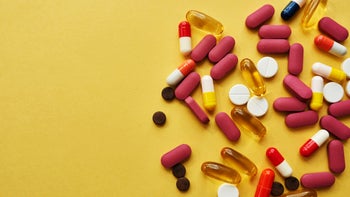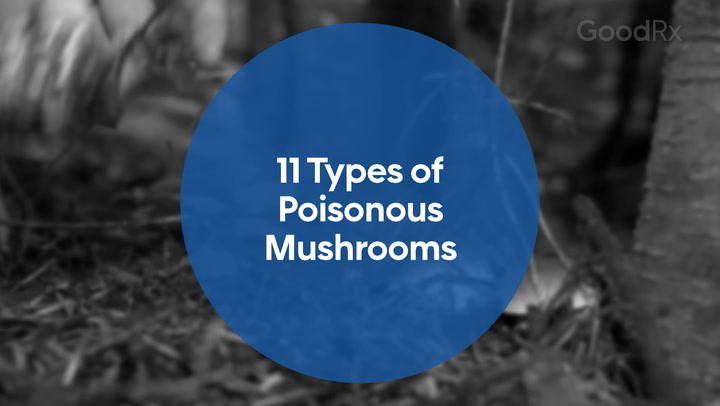
10 Foods That Are Bad for Your Liver — and Options That Can Reverse the Damage
Key takeaways:
Metabolic dysfunction-associated fatty liver disease (MAFLD) happens when too much fat builds up in the liver and damages it. Eating certain kinds of food can increase the risk of developing MAFLD.
Foods that are high in sugar, fat, and salt put extra stress on the liver. Fast food, packaged foods, and processed foods tend to contain a lot of these elements.
Other kinds of food can prevent or slow down liver damage. Sometimes a nutritious and balanced diet can even reverse it.
Table of contents

Your liver is one of the hardest working organs in your body. It helps with digestion, stores nutrients, filters toxins, and supports your immune system. But what you eat can affect how well it works.
Some foods can overload your liver and raise the risk of liver disease — while others can help heal it. We’ll review which foods may be harmful to your liver, and what the science says about the most important dietary dos and don’ts.
What foods are bad for your liver?
Some foods can stress your liver — especially if they lead to fat buildup in the liver. This can raise your risk for fatty liver disease, now called metabolic dysfunction-associated fatty liver disease (MAFLD) and previously known as NAFLD, for nonalcoholic fatty liver disease. In some people, it can progress to inflammation and scarring, known as metabolic dysfunction steatohepatitis (MASH) — this used to be called NASH, for nonalcoholic associated steatohepatitis.
Search and compare options
The good news: Diet changes can help stop or even reverse fat buildup. Here are some foods to limit for better liver health.
1. Fast food
It’s quick, it’s cheap, and sometimes you really crave it. While fast food isn’t an absolute no-no, most people in the U.S. eat too much of it. A 2023 study found that people who eat fast food for 20% or more of their meals collect too much fat in their liver. And the damage is worse for people who have diabetes or carry excess weight.
Other restaurant food isn’t off the hook, either. Restaurant food tends to contain more sugar, salt, and fat than your liver can handle.
2. Ultra-processed foods
Ultra-processed foods have been preserved, changed, or refined well beyond their natural form. To spot ultra-processed foods, check the list of ingredients. If there are a lot of chemical names that are hard to pronounce, it’s heavily processed.
That means the liver has to process these additives and preservatives on top of the sugar, salt, and fat that’s in the food. Eating too many ultra-processed foods is linked to fat buildup in the liver.
Common ultra-processed foods include:
Packaged cakes, cookies, and sweets
Chips and other snack foods
Packaged breakfast bars, rolls, and buns
Ready-to-eat, microwavable, and instant foods
Foods for liver health: Foods high in fiber, antioxidants, and healthy fats can support liver health. Find out which foods are best for your liver.
Do “liver detox” drinks work? Some drinks that claim to help your liver can actually be harmful. Find out what the research really says.
Best supplements for the liver: Learn which supplements can help liver health — and which can harm it.
3. Sweetened foods
Another way to support liver health might be limiting foods with added sugar. When the body has to work hard to process these extra sugars, it puts stress on the liver. It can also lead to weight gain, which is a risk factor for fatty liver disease.
It helps to know how to identify added sugars on a nutrition label. The Dietary Guidelines for Americans recommends that fewer than 10% of your daily calories come from added sugars — but many packaged and processed foods contain more than that in just one serving.
The names of added sugars you might see on a list of ingredients include:
Corn syrup
High-fructose corn syrup
Dextrose, fructose, sucrose, glucose, lactose, or maltose
Brown sugar or raw sugar
Fruit nectars
Honey, maple syrup, or molasses
Cane juice or malt syrup
Read more like this
Explore these related articles, suggested for readers like you.
4. Sugary drinks
Drinks with added sugar are bad for the liver for the same reason as sweetened foods. But sweetened drinks come with an extra risk: You won’t feel full as fast. So, it’s easy to drink a lot more sugar than your body needs.
Studies have shown that the more sugar-sweetened beverages you drink, the higher your risk for MAFLD. Popular drinks that often include a lot of added sugar include:
Regular soda (not diet or sugar-free)
Sports drinks
Sweetened coffee or tea drinks
Energy drinks
Fruit drinks
Sweetened water
5. Artificial sweeteners
If sweetened foods and drinks are too sugary, are diet or sugar-free items the solution? Unfortunately, the answer is probably not.
Artificial sweeteners don’t provide extra calories. But studies on their risk for MAFLD have had mixed results so far. Some show that these sugar substitutes may negatively affect the healthy bacteria that lives in your gut, which can lead to fat buildup in the liver.
In 2023, the World Health Organization (WHO) recommended against the use of artificial sweeteners as a way to lose weight. The WHO also noted that there may be harmful effects when using them over time. Until more is known, it’s best to limit your intake.
Common artificial sweeteners include:
Aspartame
Acesulfame potassium (Ace-K)
Sucralose
Neotame
Advantame
Saccharin
6. Refined grains
Refined grains are processed to change their texture, appearance, or taste. Foods made with refined grains also have a longer shelf life. But fiber and important vitamins and minerals are removed during the refining process.
When you eat refined grains, versus whole grains, your blood sugar goes up faster. You also might eat more because you don’t feel as full. These factors can increase the risk for fat deposits and inflammation in the liver.
Common foods made with refined grains include:
White bread
Cakes, muffins, and pastries
Corn grits
White rice
Flour tortillas
Foods made with white or all-purpose flour
7. Red meat and processed meats
Red meat and processed meats are high in saturated fat. Eating a lot of these foods is known to increase the risk of cardiovascular disease and risk of fat in the liver. They’re also associated with some forms of cancer, especially colorectal cancer.
Foods in these categories include:
Beef, lamb, and pork
Organ meat
Hot dogs and sausages
Bacon
Lunch meats
8. Alcohol
Drinking excess alcohol can also cause liver damage. Alcohol-associated liver disease is a major cause of liver disease worldwide. Drinking alcohol regularly for years can increase the risk of fat deposits in the liver, scarring and inflammation, and liver cancer.
And drinking too much along with eating the foods mentioned above can speed up the damage.
You are at a higher risk for liver disease if you consume the following:
For men: more than 14 drinks per week, or more than 4 drinks at a time
For women: more than 7 drinks per week, or more than 3 drinks at a time
For people over 65 years: more than 7 drinks per week, or 3 drinks at a time
9. Fried foods
Fried foods are high in saturated and trans fat. Frying foods doesn’t just change the textures and taste — it changes the nutritional content of the food.
Eating fried foods is also linked to an increased risk for fat buildup in the liver. People who eat more fried foods are more likely to be diagnosed with MAFLD.
If you love the crispy texture of fried foods but want to be mindful of liver health, try making these changes:
Use an air fryer.
Bake on high temperatures.
Fry foods in unsaturated fats like olive oil.
10. Salty foods
Salty foods may not seem like a liver concern, but research also shows a link between high salt intake and liver disease. People who regularly add extra salt to their food are more likely to develop fat buildup in the liver. Salty foods are also linked to conditions such as liver cirrhosis and liver cancer.
Lowering your salt intake can boost your heart health as well. Try reaching for other salt alternatives — like garlic or lemon zest. And learn to read nutrition labels carefully to lower the amount of sodium you consume from packaged foods.
Why are certain foods bad for your liver?
What you eat affects your liver health in several ways. First, consuming too many calories can lead to excess weight. And extra weight — especially around the middle — is a risk factor for conditions, like metabolic syndrome and Type 2 diabetes, which put extra stress on your liver.
Also, as discussed above, certain foods can lead to fat buildup in the liver, or MAFLD. This form of liver disease often occurs with other conditions like:
High blood sugar (prediabetes and diabetes)
Some people with MAFLD develop more severe complications from it, such as metabolic dysfunction-associated steatohepatitis (MASH). That’s when fat builds up in the liver over time and leads to inflammation. When MASH gets worse, the liver can develop scar tissue, known as cirrhosis. Sometimes, cancer develops in the liver, too.
Can food help you reverse liver damage?
Yes, some foods can help reverse liver damage from fatty liver. And healthy nutrition may help stop the progression of more severe liver disease. The Mediterranean diet is a good place to start. Despite the name, this approach to eating can be applied to a wide variety of foods and preferences. Some of the liver-healthy elements of this way of eating include:
Plenty of fresh fruits and vegetables
Fish
Nuts (including peanut butter)
Olive oil
Whole grains
Legumes (beans, peas, lentils)
Drinking certain beverages — including coffee, green tea, and lemon juice — benefit the liver. And drinking plenty of water helps your body’s metabolism, which will cause less fat to settle in the liver.
Supplements for fatty liver
Certain herbs, spices, and supplements may also help to slow or reverse liver disease. The supplements that have the strongest evidence supporting liver health are:
Milk thistle: A large review study found that taking milk thistle may be good for your liver. Taking milk thistle lowered signs of liver inflammation in people with fat buildup in the liver.
Turmeric: Turmeric might be especially helpful for liver health when you take it with black pepper.
Korean ginseng: Some clinical studies suggest it may be helpful for people with chronic liver disease.
Probiotics: Probiotics are often used to improve gut health. They may also help lower liver inflammation in people with fatty liver disease.
Even natural foods and supplements can interact with some medications, and some may not be right for people with certain health conditions. Talk with a healthcare professional before taking supplements or adding large amounts of herbs or spices to your diet.
Frequently asked questions
Early symptoms of liver damage can include fatigue, abdominal pain, and loss of appetite. As liver disease progresses, signs and symptoms may include yellow color to your skin and eyes, light color to stools, itchy skin, and swelling of the legs and abdomen. Some people develop confusion and bleeding episodes.
Elevated liver enzymes can be a sign that there’s damage to your liver cells or a problem with your liver’s function. Many things can cause your liver enzymes to increase, such as congestive heart failure, extreme exercise, recreational drugs or toxins, infections, or liver disease. If your liver enzymes are high, talk with a healthcare professional you trust. They can work with you to figure out what’s going on, and what other tests may be needed.
You can check your liver function at home using kits that get sent to the lab for analysis. But it’s important to review any results with a healthcare professional. At-home tests may not give the full picture — and a healthcare professional can help you understand what the tests mean, and what to do next.
Some research in rats suggests that apple cider vinegar can help protect the liver. But there isn’t much research on apple cider vinegar and liver health in humans. It may offer other benefits though — like improving blood sugar and cholesterol levels.
The bottom line
Your liver is a hardworking organ that supports your entire body. Too much sugar, salt, and fried food can lead to fat buildup and damage your liver over time. But the good news is that making different choices can improve liver health and even reverse the damage. Eating plenty of unprocessed whole foods can benefit not just your liver, but the rest of your body as well.
Why trust our experts?



References
American Gastrointestinal Association. (n.d.). Metabolic dysfunction-associated steatotic liver disease (MASLD) and metabolic dysfunction-associated steatohepatitis (MASH).
Anania, C., et al. (2018). Mediterranean diet and nonalcoholic fatty liver disease. World Journal of Gastroenterology.
Chaturvedi, S., et al. (2024). Dietary pattern associated with non-alcoholic fatty liver disease (NAFLD) in non-diabetic adult patients: A case control study. Clinical Nutrition ESPEN.
Emamat, H., et al. (2020). Artificial sweeteners are related to non-alcoholic fatty liver disease: Microbiota dysbiosis as a novel potential mechanism. EXCLI Journal.
Habibullah, M., et al. (2024). Metabolic-associated fatty liver disease: A selective review of pathogenesis, diagnostic approaches, and therapeutic strategies. Frontiers in Medicine.
Henney, A. E., et al (2023). Ultra-processed food intake is associated with non-alcoholic fatty liver disease in adults: A systematic review and meta-analysis. Nutrients.
Hydes, T., et al. (2021) The impact of macronutrient intake on non-alcoholic fatty liver disease (NAFLD): Too much fat, too much carbohydrate, or just too many calories? Frontiers in Nutrition.
Jamioł-Milc, D., et al. (2023). Nutritional support for liver diseases. Nutrients.
Kalra, A., et al. (2023). Physiology, liver. StatPearls.
Keck Medicine of USC. (2023). Consumption of fast food linked to liver disease.
Kim, M. N., et al. (2022). Red meat consumption, obesity, and the risk of nonalcoholic fatty liver disease among women: Evidence from mediation analysis. Clinical Nutrition.
Liu, J., et al. (2020). Quality of meals consumed by U.S. adults at full-service and fast-food restaurants, 2003-2016: Persistent low quality and widening disparities. The Journal of Nutrition.
Liu, Q., et al. (2025). High salt diet causally increases metabolic dysfunction-associated steatotic liver disease risk: A bidirectional mendelian randomization study. Nutrition Research.
Mackowiak, B., et al. (2024). Alcohol-associated liver disease. The Journal of Clinical Investigation.
Mansour-Ghanaei, F., et al. (2018). Efficacy of curcumin/turmeric on liver enzymes in patients with non-alcoholic fatty liver disease: A systematic review of randomized controlled trials. Integrative Medicine Research.
Mega, A., et al. (2021). Food and nutrition in the pathogenesis of liver damage. Nutrients.
Mozaffari, S., et al. (2024). The effect of probiotic consumption on lipid profile, glycemic index, inflammatory markers, and liver function in NAFLD patients: A systematic review and meta-analysis of randomized controlled trials. Journal of Diabetes and its Complications.
Nagarjuna, D., et al. Alcohol-associated liver disease: A review. Gastroenterology & Endoscopy.
Naomi, N. D., et al. (2023). Sugar-sweetened beverages, low/no-calorie beverages, fruit juice and non-alcoholic fatty liver disease defined by fatty liver index: The SWEET project. Nutrition & Diabetes.
National Cancer Institute. (2023). Red meat and processed meat consumption.
Park, T. Y., et al. (2017). Effect of Korean red ginseng in chronic liver disease. Journal of Ginseng Research.
Patel, R., et al. (2023). Alcohol-associated liver disease. StatPearls.
Peng, H., et al. (2021). Association of meat consumption with NAFLD risk and liver-related biochemical indexes in older Chinese: A cross-sectional study. BMC Gastroenterology.
Rahimi-Sakak, F., et al. (2022). Red and processed meat intake in relation to non-alcoholic fatty liver disease risk: Results from a case-control study. Clinical Nutrition Research.
Sharma, A., et al. (2023). Chronic liver disease. StatPearls.
Sharma, B., et al. (2023). Nonalcoholic steatohepatitis (NASH). StatPearls.
Shi, W., et al. (2023). Red meat consumption, cardiovascular diseases, and diabetes: A systematic review and meta-analysis. European Heart Journal.
Tseng, T. S., et al. (2023). Sugar-sweetened beverages and artificially sweetened beverages consumption and the risk of nonalcoholic fatty liver (NAFLD) and nonalcoholic steatohepatitis (NASH). Nutrients.
Tsompanaki, E., et al. (2023). Systematic review and meta-analysis: The role of diet in the development of nonalcoholic fatty liver disease. Clinical Gastroenterology and Hepatology.
U.S. Department of Agriculture. (n.d.). Grains.
U.S. Food and Drug Administration. (2024). Added sugars on the nutrition facts label.
U.S. Food and Drug Administration. (2025). Aspartame and other sweeteners in food.
Wang, X., et al. (2021). Higher plain water intake is related to lower newly diagnosed nonalcoholic fatty liver disease risk: A population-based study. European Journal of Clinical Nutrition.
World Health Organization. (2023). WHO advises not to use non-sugar sweeteners for weight control in newly released guideline.
Zhang, S., et al. (2025). Adding salt to foods and risk of metabolic dysfunction-associated steatotic liver disease and other chronic liver diseases. European Journal of Nutrition.
Zhong, S., et al. (2017). The therapeutic effect of silymarin in the treatment of nonalcoholic fatty disease: A meta-analysis (PRISMA) of randomized control trials. Medicine.





























